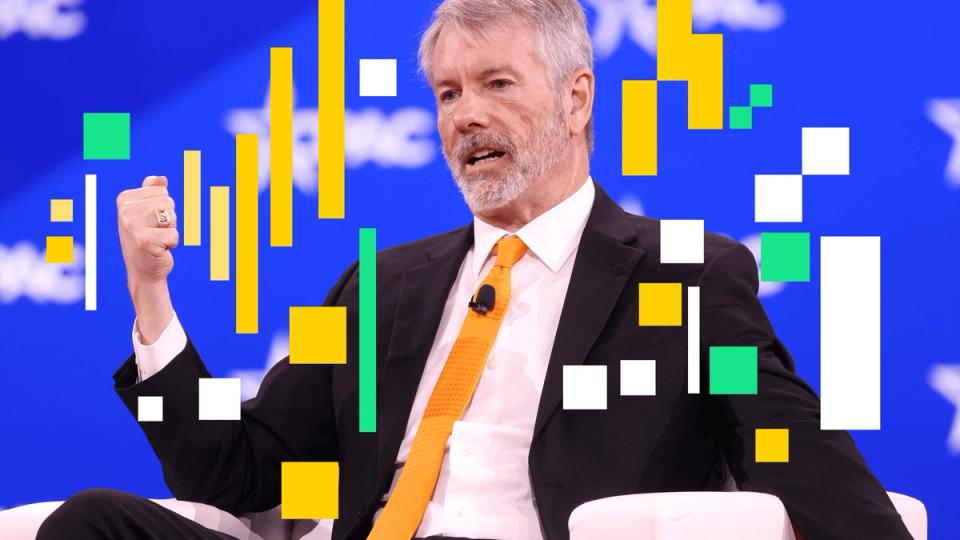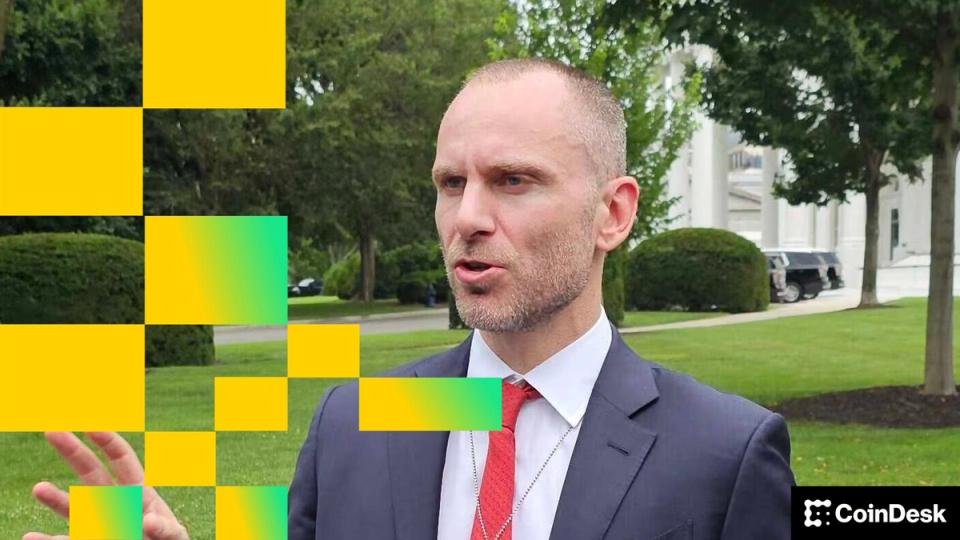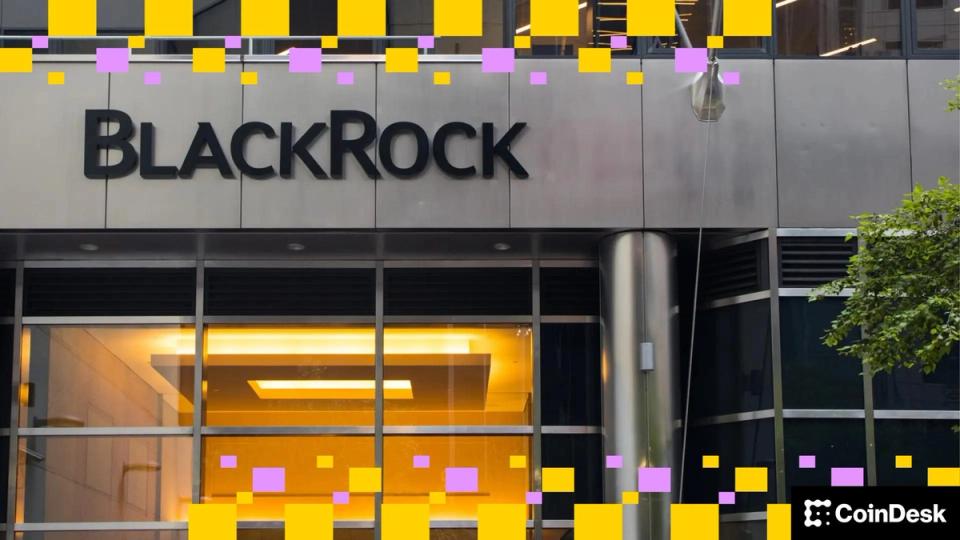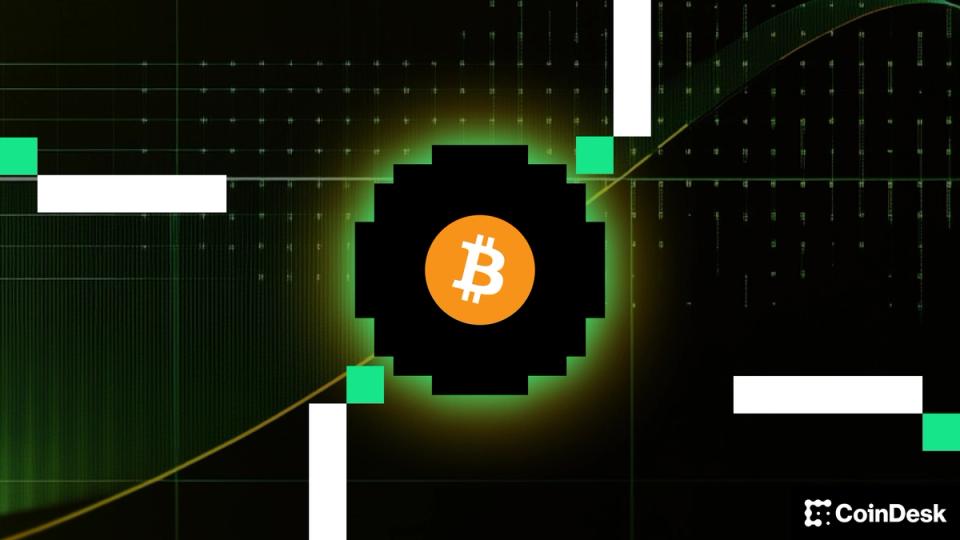top news
Here are the 4 big things we're watching in the stock market this week

Earnings season is winding down as we kick off the last month of 2025.
Sourcetop news
'Zootopia 2' fuels top 5 Thanksgiving box office haul

Disney's "Zootopia 2" tallied an estimated $156 million during the five-day Thanksgiving holiday, leading the box office to a top five performance.
Sourcetop news
These 5 charts hint at where stocks might go next after a wild November for the market

November historically has been a strong month for the U.S. stock market. This year’s gains didn’t come easy.
Sourcetop news
The mobile app has changed the low-cost franchise business model, but not the risks

Many new franchise business models are mobile app and internet based, but while the lack of real estate can reduce costs, many risks remain.
Sourcetop news
Tech founder built a landline-style phone to help reduce her screentime—she sold $120,000 of them in 3 days

Cat Goetze, who goes by CatGPT online, launched Physical Phones to help people spend less time on their smartphones.
Sourcetop news
Silicon Valley parents spent $2,000 to start a side hustle in their basement—now it brings in over $295,000 a year

When Tayo and Dolu Lanlehin started their party rental side hustle, they bought and stored 48 chairs in their basement. This year, the business has brought in nearly $300K.
Sourcetop news
The 10 fastest-growing jobs of the next decade, according to BLS report—many can pay 6 figures

A majority of the fastest-growing roles for 2034 will be in the health care and information and technology sectors.
Sourcetop news
How much money you need to be in the wealthiest 10% of Americans

You need nearly $2 million in net worth to be considered part of the wealthiest 10% of Americans.
Sourcetop news
I've studied over 200 kids—the happiest ones have parents who do 9 things with them every morning

Raising happy kids starts with a calm, joyful morning routine. Child psychologist Reem Raouda has studied over 200 kids, and she's found that the happiest, most well-rounded kids have parents who do nine things with their children every morning.
Sourcetop news
Here’s what’s worth streaming in December 2025 on Netflix, Hulu, HBO Max and more

‘Stranger Things’ finally wraps up on Netflix, ‘Fallout’ is back with a new season on Amazon and Taylor Swift takes over Disney+
Sourcetop news
My friend cosigned a loan for a BMW, but the driver defaulted. They’re both on the hook for $5K. What happens now?

“The driver thinks he should be compensated $1,500 for the tires he’s still paying for.”
Sourcetop news
Why investors should hope this Cyber Monday is a down day for retail stocks

Poor post-Thanksgiving showing for the retail sector often leads it to year-end gains.
Sourcetop news
Love your stock-index fund? It might be time to spice up your investment strategy.

There are easy and inexpensive ways to broaden your stock market exposure, even within the S&P 500.
Sourcetop news
How to decide on the right place to retire abroad

Here’s what we did before making the big move.
Sourcetop news
Ina Garten had to 'learn very quickly how to be a boss,' she says—here's the best leadership advice she ever received

When she opened her store Barefoot Contessa in 1978, Ina Garten had a lot to learn about being a boss.
Sourcetop news
3 years of AI Mania: How ChatGPT reordered the stock market

Bets that the tech will reshape society have minted new market leaders, made an already concentrated S&P 500 Index even more top heavy, and left companies and industries considered at risk of being replaced by AI struggling to keep pace
Sourcetop news
Tesla’s Cybertruck is turning 2. It’s been a big flop.

CEO Elon Musk once described the Cybertruck as Tesla’s “best ever” product. But demand for the controversial pickup truck has dried up.
Sourcetop news
16 software stocks for investors sifting through the bargain bin

The software sector has been a meaningful laggard this year, and Baird analysts say plenty of stocks are now on sale.
Sourcetop news
As ChatGPT turns 3, here’s what’s crashing the party

OpenAI sits at the center of the AI boom that it started. But it faces increasing challenges around both the business and the technology itself.
Sourcetop news
Trump announces plan to terminate Biden’s autopen directives

Trump vows to nullify Biden's autopen-signed documents, claiming misuse and threatening legal consequences for his predecessor.
Sourcetop news
Global goods trade slows as tariff frontrunning ends, WTO says

US President Donald Trump’s tariffs on imports from trading partners disrupted international commerce through much of the year, spurring many American importers to front-load orders to avoid paying the import taxes
Sourcetop news
Stocks stage big comeback in best Thanksgiving week since 2008. What comes next?

Strong performance during Thanksgiving week is often followed by gains in December.
Sourcetop news
Airbus recalls ‘significant number’ of planes. Here’s how airlines say it will impact holiday weekend travel.

The issue raises the risk of flight disruptions during the busy holiday-travel season.
Sourcetop news
Is Big Tech back? Meta’s and Microsoft’s stocks score largest weekly gains since May.

Meta and Microsoft shares have struggled for momentum over the past three months but rode improving market sentiment this week.
Sourcetop news
Stock market swings got you reeling? Answer these 6 questions before making a trade

Frustrating as volatility can be, it also tends to present opportunities.
Sourcetop news
Big retailers project calm and confidence this holiday season, while smaller businesses scramble

As businesses dive into Black Friday following a year upended by tariffs, the rule seems to be that the bigger you are, the more optimistic you feel.
Sourcetop news
As Alphabet’s stock rises and Nvidia’s pulls back, investors might be missing the point on AI

Also, the “ultimate cult stock,” retirement-planning advice and a look at 10 index-fund strategies.
Sourcetop news
Too many bosses want to be liked, but it's not a sign of good leadership, says Google exec

Many managers shy away from critical or constructive feedback in the pursuit of being well liked.
Sourcetop news
Deepak Chopra's new AI companion puts decades of wisdom 'in your pocket,' he says

Deepak Chopra's new AI bot was modeled on decades of writings, research and lectures. "I fed it all into my AI," he says.
Sourcetop news
Apple and nine more tech companies that have treated their shareholders like gold

The iPhone maker leads the way for the sector in terms of dollars spent on stock buybacks. But other tech companies have reduced their share counts significantly, as well.
Sourcetop news
Coffee hasn't been this expensive in decades—see how much prices have risen since 1985 in one chart

Grocery-store coffee prices rose 41% in a year, a surge the U.S. hasn’t seen in decades.
Sourcetop news
You may be able to save more money than you think, advisor says: 'You just have to go look for it'

Saving doesn't always require more money, you might just have to reorganize what you already have, says CFP Kashif Ahmed.
Sourcetop news
Should I take Social Security at 62 so I can travel and take care of my father?

“I used to travel a lot in the army and really miss it.”
Sourcetop news
Alphabet’s stock is the most overbought ever by one measure. Is that a problem?

Alphabet’s stock is technically very overbought. While that’s not necessarily a reason to sell, new buyers may want to hold off for a little while.
Sourcetop news
These tech stocks join Alphabet among the sector’s rare gainers for November

Certain AI plays bucked the tech sector’s selloff as the market got more discerning.
Sourcetop news
Why oil is on track to post its largest yearly decline since the pandemic

Oil prices remain on track for their largest yearly loss since the pandemic. They may be near a short-term bottom, however, with the lower prices likely to boost demand and temper global production.
Sourcetop news
Black Friday isn’t just for sales — it often kicks off a stretch of stock-market gains

Investors can expect several seasonally bullish trading patterns from now into the new year.
Sourcetop news
These stocks may benefit from a shift towards Google’s highly specialized AI microchips

If there’s widespread adoption of Google’s TPU ecosystem, there are plenty of stocks that may flourish as a consequence.
Sourcetop news
Super Micro, Oracle headline this list of the worst-performing tech stocks in November

As the AI trade fizzles, major technology stocks have seen month-to-date declines of as much as 37%.
Sourcetop news
The facts from Social Security dump on Elon Musk’s fraud claims yet again

The latest inspector-general report confirms what has long been suspected: Namely that Elon Musk and Donald Trump were talking total nonsense for the first six months of this year.
Sourcebusiness
'To sustain the ride, they started to dilute it': How Black Friday became a retail letdown
Black Friday used to be the biggest in-person shopping event of the year, but for six straight years, online sales have outpaced stores.
Sourcetop news
I spent $200 on my friend’s birthday party and she didn’t thank me. Is it rude to ask her to reimburse me for half?

”I told her that she was treating me like a party planner — and not like a friend.”
Sourcetop news
Midterm elections are coming in 2026. Here’s what 100 years of data tell us about how stocks may react.

The ‘midterm curse’ means its likely the ruling party will fare badly
Sourcetop news
‘We’re struggling’: I’m 41 with 5 kids and $46K in credit-card debt. Do I raid my $1.2 million IRAs to pay it off?

“I bring in $7,200 a month from my pension and disability benefits.”
Sourcetop news
‘Today’ host Dylan Dreyer sells New York apartment for $1.8 million following split-up with Brian Fichera

“Today” host Dylan Dreyer and her estranged husband, Brian Fichera, have sold their longtime marital home in New York City.
Sourcetop news
Bitcoin has moved back above $90,000. Why this strategist says a return to $100,000 is not far away

BTIG’s chief technical strategist Jonathan Krinksy said bitcoin has just exited seasonal period of bottoming.
Sourcetop news
CME halts futures trading on stocks, currencies and other markets, citing data center cooling issue

Black Friday trading was off to an auspicious start after exchange operator CME was forced to halt futures trading on Friday.
Sourcetop news
88-year-old Morgan Freeman shares the secrets to his long life and 60-year career: 'Keep getting up in the morning, keep moving'

At 88 years old, renowned actor Morgan Freeman doesn't plan to retire. Here's what he says is his secret to longevity.
Sourcetop news
35-year-old American left the U.S. for the U.K., spends about $2,532 a month: 'This is where I'm supposed to be'

Chanel Rivers moved to London in October 2024 after planning a move on and off since 2019.
Sourcetop news
Putin breaks his silence on Ukraine peace plan, says Moscow ready for 'serious' talks

Russian President Vladimir Putin said the outlines of a draft peace plan agreed by the U.S. and Ukraine could become the basis of a deal to end the war.
Sourcebusiness
With Trump's tax bill set to dent giving by the wealthy, can middle-class donors make up the difference?

Next year, some 140 million Americans will get a new tax break on donations. Experts warn it's unclear whether they will use it.
Sourcetop news
Psychologists say this 'green flag' is one of the strongest predictors of a successful relationship—it can be 'hard to spot'

Couples counselor Baya Voce says that this green flag is a sure sign of relationship success, but it can be "hard to spot early on."
Sourcetop news
Trump’s One Big Beautiful Bill Act will really kick into gear next year. These are the stocks to watch, says SocGen.

The OBBBA may provide an additional tailwind for equities in 2026
Sourcetop news
‘I’m burned out by the drama’: Is it wrong to skip my Thanksgiving family dinner? Last year was fraught.

“I’m invited because, at 55, I am the only single one in the family.”
Sourcetop news
China’s Envision Group mulls India battery plant as storage demand rises

India’s ability to accelerate the installation of renewables is threatened by a lack of storage systems that are needed to stabilize power transmission
Sourcetop news
Beaten-down Puma shares are soaring. The sportswear maker may have a suitor.

Puma shares are climbing on Thursday after a report that a China sportswear maker may consider a bid for the struggling German sportswear maker.
Sourcetop news
China’s Anta Sports explores potential takeover of Puma

Talks remain preliminary as bidders assess valuation hurdles posed by major shareholder Pinault family’s expectations; Puma shares jump 11% on Germany’s Tradegate exchange
Sourcetop news
Kevin Spacey says he is living in hotels after Baltimore foreclosure; ‘I’m going where the work is’

Hollywood legend Kevin Spacey has revealed that he is homeless, having lost his lavish Baltimore property to foreclosure while dealing with the soaring cost of legal fees.
Sourcetop news
Trump says he won’t invite South Africa to G-20 in Miami

Trump repeated claims without evidence that South Africa was committing genocide against White Afrikaners and seizing land without compensation and criticised the country’s handling of the recent global summit
Sourcetop news
‘Stranger Things’ has made at least $1 billion for Netflix already. Now Season 5 could deliver another $200 million.

At least that’s what one expert says, but the bigger question is whether the hit show could become a ‘Star Wars’-type franchise worth billions more
Sourcetop news
Stocks stage powerful comeback ahead of Thanksgiving. It wasn’t enough to erase November’s losses.

U.S. stocks rallied for a fourth straight day on Wednesday, having clawed back all of last week’s losses ahead of the Thanksgiving holiday.
Sourcetop news
This Thanksgiving, worry more about AI taking your job — and less about throwing money away on Black Friday

This Thanksgiving, give thanks if you still have a job.
Sourcetop news
Students pursuing these 11 degrees will be eligible to take out up to $200,000 in federal loans under new borrowing limits

Students pursuing professional degrees will be able to borrow up to $200,000 in federal student loans beginning in 2026.
Sourcetop news
Economy muddled along during the shutdown, the Fed found. Is another rate cut on tap?

Just two weeks before a pivotal meeting, the Federal Reserve said the U.S. economy has been just muddling along. Few businesses are hiring, inflation is still a sore spot and households have cut back on spending.
Sourcetop news
Nvidia is going out of its way to rebut online criticism. Is this savvy PR or adding fuel to the fire?

Nvidia has been vocal in refuting budding criticisms, and there’s debate over the merits of its communications strategy.
Sourcetop news
Scoring great Black Friday deals is getting harder. These 6 tips can help you shop smarter this weekend.

Deals aren’t as enticing this Black Friday compared with years past — but it’s still possible to find bargains if you know where to look.
Sourcetop news
Workday shares sink on subscription revenue guidance concerns

Workday shares fell as analysts lowered their price targets for the software maker after the company revised its full-year subscription revenue forecast.
Sourcetop news
Black Friday doesn’t guarantee lower prices, as tariffs have led some stores to raise them

If you’re waiting for Black Friday deals before buying, depending on what’s on your shopping list, you may be out of luck this year.
Sourcebusiness
'Zootopia 2,' 'Wicked: For Good' lead Thanksgiving box office

Disney's "Zootopia 2" and Universal's "Wicked: For Good" are set for strong Thanksgiving box office haul, but not as big as 2024's record-breaking tally.
Sourcetop news
Stop and do this before you buy anything on Black Friday

“Be sure to ‘pay yourself first’ before you spend a dollar on deals,” says financial planner.
Sourcetop news
This year’s Black Friday cruise deals can save you hundreds of dollars. Six tips for shopping the sales.

There are sales aplenty —and some extend through Cyber Monday and beyond.
Sourcetop news
It’s crunch time for Medicare open enrollment. Can AI help you pick a plan?

What AI gets right — and wrong — when navigating Medicare.
Sourcetop news
It seems like everywhere is a ‘best place to retire.’ Are these lists worth your time?

Think through what your lifestyle, healthcare, taxes and community would be like if you relocate.
Sourcetop news
After years of rising drug prices, more discounts are here — at least for Medicare

Price are falling sharply for Medicare beneficiaries prescribed Novo Nordisk’s GLP-1 drugs like Ozempic in 2027.
Sourcetop news
November’s stock-market pullback could be a speed bump. Or possibly a hint of something worse to come.

Wall Street is asking an uncomfortable question it had avoided all year: Has the equity rally finally run out of road?
Sourcetop news
Gold may come close to $5000 in 2026 and surpass that in 2027, predicts Deutsche Bank.

Gold is breaking out of historical norms, and the range this year was the widest since 1980.
Sourcetop news
What iPhone slump? Apple is set to become the industry leader for the first time in 14 years.

Samsung has been the smartphone industry’s market-share leader, but iPhone 17 momentum puts Apple on track to reclaim its crown.
Sourcetop news
The 10 U.S. cities where pay for young workers is rising the fastest, says new research

Wage growth is on the upswing for young workers in these cities, according to Glassdoor.
Sourcetop news
Business investment surges again on AI spending, but manufacturers still in a slump

Business investment rose in September for the third month in a row — buoyed by spending on artificial intelligence — but the industrial side of the U.S. economy more broadly was still mired in a slump.
Sourcetop news
Over a third of Black Friday sales aren't really discounts, study finds: 'There's some trickery happening'

Prices fluctuate all the time. A low price on a particular item may not be exclusive to Black Friday sales, experts say.
Sourcetop news
Layoffs show little sign of rising after end of shutdown — jobless claims drop to seven-month low

A flurry of layoffs by large companies such as Amazon and Verizon haven’t made a big dent — so far — in the number of people applying for unemployment benefits, a sign the U.S. labor is still in stable condition.
Sourcetop news
Is the stock market open on Black Friday? Are any stores open on Thanksgiving Day?

Thanksgiving week comes with plenty of holiday-adjusted business hours, including, of course on Wall Street — so here’s what you need to know.
Sourcetop news
Alphabet gets closer to $4 trillion as Morgan Stanley puts a big number around its chip potential

Alphabet could be selling 1 million AI chips by 2027, say analysts.
Sourcebusiness
Black Friday is most popular with Gen Z, even as the holiday loses its shine, new survey finds
A new AT&T survey found that members of Generation Z are the biggest Black Friday shoppers, while older generations shop closer to Christmas.
Sourcetop news
Why scoring the best Black Friday deals feels more important than it has in years — for both shoppers and the economy

After several years of rising prices and economic uncertainty, consumers are more focused on scoring the best deals.
Sourcetop news
Deere’s outlook disappoints, as it means the agriculture sector hasn’t bottomed yet

Deere’s stock falls as the full-year outlook suggests the worst of the agriculture cycle isn’t over yet.
Sourcetop news
Mortgage rates fall sharply on expectations of a Fed rate cut. Will they keep on dropping from here?

Mortgage rates took a dive on Tuesday, pushing the 30-year rate to the lowest level in a month.
Sourcetop news
JPMorgan just one-upped the most bullish call on Wall Street for the S&P 500 next year

JPMorgan has an optimistic view on U.S. stock markets next year, and AI momentum will be playing a starring role.
Sourcetop news
My college-age kids inherited $300K from a 401(k). What should they do with this money?

“This money is likely to be saved for the purchase of homes in 10 years or so.”
Sourcetop news
Steelers QB Aaron Rodgers lists Wisconsin mansion for $3.7 million, despite ‘sentimental attachment’

NFL star Aaron Rodgers put his longtime Wisconsin mansion on the market just over two years after he was traded to the New York Jets by the Green Bay Packers.
Sourcetop news
Bill Cosby sells N.Y. townhouse for a whopping $28 million; he’s still facing foreclosure on another home

Bill Cosby has saved at least one of his New York City homes from foreclosure—after selling the historic townhouse less than two months after he put it on the market.
Sourcetop news
The 2026 Subaru Crosstrek is impressively functional with adventurous flair, and now a quieter cabin, too

Affordable, capable, and practical, the subcompact 2026 Subaru Crosstrek is also a passel of fun.
Sourcetop news
Bets surge on Kevin Hassett becoming next Fed chair

The current White House National Economic Council Director is in tune with Trump’s view on interest rates
Sourcetop news
Google, the sleeping giant in global AI race, now ‘fully awake’

Since the launch of ChatGPT three years ago, analysts and technologists — even a Google engineer and the company’s former chief executive officer — have declared Google behind in the high-stakes race to develop artificial intelligence. Not anymore.
Sourcetop news
The U.K. just hiked its minimum wage again. Now it’s more than double the U.S.’s hourly pay floor.

British workers are about to get a minimum-wage bump higher, putting the U.K. near the top of a world ranking.
Sourcetop news
Ola’s Bhavish Aggarwal hopes for turnaround with new home battery storage

The pivot comes after the loss-making firm saw a 43% drop in revenue and 47% plunge in sales in the latest quarterly results this month, underlining the scale of Ola’s troubles
Sourcetop news
SoftBank completes acquisition of chipmaker Ampere Computing

The Japanese company said in a statement Wednesday that the impact of the deal on its finances and earnings is under review; SoftBank shares rose as much as 8 per cent Wednesday morning in Tokyo
Sourcetop news
Nvidia’s stock drops on Google fears. Are investors missing the point?

While investors debate which company will win in the AI chip market, a Bernstein analyst says the question is more about whether or not the market is still growing.
Sourcetop news
Cramer says Nvidia selloff is overdone and driven by fear, not fundamentals

Jim Cramer says the Nvidia selloff is driven by fear, not fundamentals, and argues investors should stick with AI leaders despite Alphabet’s chip shift.
Sourcetop news
Why AMD’s stock is having its worst month in three years

AMD’s stock is down 23% in November. Investors are worried about everything from interest rates to rising memory prices to Google’s growing momentum in AI.
Sourceforex
investingLive Americas FX news wrap 28 Nov: USD heads lower to end the week. Stocks higher

<ul><li><a href="https://investinglive.com/news/major-us-stock-indices-close-higher-and-extend-the-winning-streak-to-5-days-20251128/">Major US stock indices close higher and extend the winning streak to 5 days</a></li><li><a href="https://investinglive.com/technical-analysis/what-are-the-key-technical-levels-in-play-for-the-major-currency-pairs-as-the-week-closes-20251128/">What are the key technical levels in play for the major currency pairs as the week closes?</a></li><li><a href="https://investinglive.com/news/european-indices-close-mostly-higher-on-the-day-solid-gains-for-the-week-20251128/">European indices close mostly higher on the day. Solid gains for the week.</a></li><li><a href="https://investinglive.com/news/ukraines-zelenskyy-talks-with-the-us-are-to-happen-in-the-near-future-20251128/">Ukraine's Zelenskyy: Talks with the US are to happen in the near future</a></li><li><a href="https://investinglive.com/news/canada-gdp-q3-annualized-26-vs-05-expected-20251128/">Canada GDP Q3 annualized +2.6% vs +0.5% expected</a></li><li><a href="https://investinglive.com/technical-analysis/kickstart-the-na-trading-session-for-nov-28-wa-technical-look-at-eurusd-usdjpy-gbpusd-20251128/">Kickstart the NA trading session for Nov. 28 w/a technical look at EURUSD, USDJPY & GBPUSD</a></li><li><a href="https://investinglive.com/news/germany-november-preliminary-cpi-23-vs-24-yy-expected-20251128/">Germany November preliminary CPI +2.3% vs +2.4% y/y expected</a></li><li><a href="https://investinglive.com/news/investinglive-european-markets-wrap-quiet-black-friday-20251128/">investingLive European markets wrap: Quiet Black Friday</a></li></ul><p>The USD was mostly lower with the exception being the GBP (USD up a modest 0.05%). </p><p>A snapshot of the changes of the USD vs the major currencies as US traders head home early for the weekend shows:</p><ul><li>EUR -0.04%</li><li>GBP +0.05%</li><li>JPY -0.10%</li><li>CHF -0.19%</li><li>CAD -0.36%</li><li>AUD -0.21%</li><li>NZD -0.10%</li></ul><p>The big mover was the USDCAD after the GDP came in stronger at 2.6% vs 0.5% estimate. </p><ul><li>GDP Q3 Q/Q +0.6% vs -0.4% prior (revised to -0.5%)</li><li>GDP YoY 2.6% vs 0.5% estimate</li></ul><p>The BoC projected +0.5%, so this blows it out of the water However, it was mainly driven by a big fall in imports. Nevertheless, it allows the BOC to sit back for a whiled</p><p>From StatCan, they said:</p><p> "The rise in the third quarter was driven by a strengthening trade balance, as imports dropped and exports edged up. Increased capital investment was driven by government capital spending, as business investment was flat. Overall growth was dampened by declines in household and government final consumption expenditures as well as a slower accumulation of business inventory."</p><p>The USDCAD fell to the 50% of the trading range since September low at 1.39367 and bounced higher. The pair is closing near a key swing area between 1.3968 to 1.3976.</p><p>For a look at that currency pair from a technical perspective as well as other major pairs vs the USD, click on the video below: </p><p>The US major stock indices all closed higher on the day and for the 5th consecutive day, but the Nasdaq closed lower for the month.</p><p>Despite the gains the NASDAQ is closing lower on the month for the 1st time since March (-1.51%). The S&P eked out a small gain of 0.13% for the month. The Dow industrial average rose 0.32% for the month.</p><p>For the trading day: </p><ul><li>Dow industrial average rose 289.30 point or 0.61% at 47716.42.</li><li>S&P index rose 36.48 points or 0.54% at 6849.09.</li><li>NASDAQ index rose 151 points or 0.65% at 23365.69</li></ul><p>Looking at the US debt market:</p><ul><li>2-year yield 3.497%, +1.6 basis point</li><li>5 year yield 3.601%, +2 point basis points</li><li>10 year yield 4.019%, +2.1 basis points</li><li>30 year yield 4.665%, +2.2 basis points</li></ul> This article was written by Greg Michalowski at investinglive.com.
Sourcecrypto
Tether CEO slams S&P ratings agency and Influencers spreading USDt FUD

The comments followed S&P's downgrade of USDt's ability to maintain its peg, which cited Tether's Bitcoin and gold reserves as a concern.
Sourcecrypto
crypto
Most Ethereum valuation models indicate ETH is undervalued: Analyst

Although most models projected ETH prices above $4,000, one critical valuation model bucked the trend, signaling that ETH may be overvalued.
Sourcecrypto
KuCoin Strengthens Australian Presence with PGA Championship Activation, Reinforcing Commitment to Australia with Regulatory Milestone and Local Expansion

BRISBANE, Australia, Nov. 28, 2025 /PRNewswire/ — KuCoin, a leading global crypto platform built on trust, is thrilled to serve as an official partner and exclusive crypto partner of the 2025 BMW Australian PGA Championship, taking place from November 27 to 30 at the Royal Queensland Golf Club in Brisbane. As one of the Asia-Pacific … Continue reading "KuCoin Strengthens Australian Presence with PGA Championship Activation, Reinforcing Commitment to Australia with Regulatory Milestone and Local Expansion"
Sourcecrypto
crypto
crypto
crypto
crypto
Fed rate-cut bets surge: Can Bitcoin finally break $91K to go higher?

Bitcoin price stayed stuck near $91,000 due to weak ETF flows and cautious derivatives as stocks and gold rallied on rising rate-cut bets.
Sourcecrypto
Bitcoin 2022 bear market correlation hits 98% as ETFs add $220M

New research showed BTC price action on course to copy the 2022 bear market while risk-asset inflows showed signs of a bullish turnaround.
Sourcecrypto
Strategy will sell Bitcoin as ‘last resort’ if mNAV drops, capital is unavailable: CEO

Strategy CEO Phong Le says Bitcoin would only be sold if the company’s stock falls below net asset value and funding options disappear, calling it a financial decision.
Sourcecrypto
BlackRock exec says ‘perfectly normal’ as IBIT sees $2.3B outflows in Nov

BlackRock says $2.34 billion in November outflows from IBIT are normal as demand once pushed the ETF near $100 billion.
Sourcecrypto
ETH may reclaim $3.2K soon, based on low stablecoin yields: Santiment

Stablecoin yields not being overly high suggests the market hasn’t reached a “major top” and Ether may reach $3,200 in the near term, according to Santiment.
Sourcecrypto
Nasdaq crypto chief pledges to ‘move as fast as we can’ on tokenized stocks

Nasdaq’s head of digital assets strategy, Matt Savarese, said the stock exchange is ready to answer any questions the SEC may have for its proposal for tokenized stocks.
Sourcecrypto
BTC mining difficulty forecast to rise in Dec, as hashprice sits near record lows

Bitcoin miners caught a break on Thursday as difficulty dropped, but the relief may be short-lived if it rises in December, as forecast.
Sourcecrypto
crypto
1.75M Hyperliquid tokens unlocked today, but was the price impacted?

The Hyperliquid development team provided clarity on Saturday's token unlock in response to community fears of increased selling pressure.
Sourcecrypto
crypto
crypto
Crypto self-custody is a fundamental right, says SEC's Hester Peirce

Self-custody of assets and financial privacy are both fundamental rights consistent with the pro-freedom philosophy on which the US was founded.
Sourcecrypto
crypto
crypto
crypto
crypto
DATs bring crypto’s insider trading problem to TradFi: Shane Molidor

Information asymmetry and front-running behaviors are migrating from token markets to institutional products like DATs, warns Shane Molidor of Forgd.
Sourcecrypto
crypto
Spot Bitcoin ETFs break four-week outflow streak with $70M in weekly inflows

Spot Bitcoin ETFs snap a four-week outflow run with $70 million in weekly inflows as Ether ETFs also turn positive and analysts flag a potential Bitcoin bottom.
Sourcecrypto
Bitcoin Pricing in 'Most Bearish Global Growth Outlook' Since Covid and FTX Crash: Bitwise Research
crypto
Bitcoin forms short-term bottom, $100K relief rally in sight: Analyst

Bitcoin may be forming a local bottom as RSI nears oversold and whales open longs, fueling a possible relief rally toward the $100,000–$110,000 zone.
Sourcecrypto
Why China’s Bitcoin mining activity is surging again after a 4-year crackdown

Bitcoin mining in China is rising again. From dominance to ban to resurgence, this makes an engaging story.
Sourcecrypto
Arthur Hayes warns Monad could crash 99%, calls it high-risk ‘VC coin’

Arthur Hayes says Monad’s token structure makes it vulnerable to a brutal selloff, while predicting money printing will fuel the next major crypto rally.
Sourcecrypto
crypto
crypto
Crypto sentiment exits ‘extreme fear’ after 18-day stretch

The crypto sentiment indicator has moved up from extreme fear, and other social media indicators suggest sentiment is moving more bullish toward Bitcoin.
Sourcecrypto
How a weakening US labor market is putting pressure on Bitcoin and crypto prices

Cooling US labor data is shifting growth expectations, rate paths and liquidity, creating new macro pressures for Bitcoin and the broader crypto market.
Sourcecrypto
Ethereum tripling its gas limit is the ‘floor, we can go higher’ — Sassano

Ethereum educator Anthony Sassano said Ethereum’s gas limit could climb beyond three times next year, with some developers pushing for a fivefold increase.
Sourcecrypto
Price predictions 11/28: BTC, ETH, XRP, BNB, SOL, DOGE, ADA, HYPE, BCH, LINK

Bitcoin and several altcoins continue to show strength, but charts suggest that each needs a strong close above a key exponential moving average to continue the uptrend.
Sourcecrypto
Bitcoin hasn’t seen this much ‘asymmetric risk-reward’ since COVID: Analyst

Bitwise crypto researcher André Dragosch said, “We’re staring at a similar macro setup” for Bitcoin as during the COVID-19 pandemic.
Sourcecrypto
crypto
UK widens crypto reporting rules to cover domestic transactions

The UK will require crypto platforms to report all activity from domestic users starting in 2026, as global tax authorities worldwide tighten oversight of digital assets.
Sourcecrypto
CoinShares withdraws SEC filing for staked Solana ETF

Analysts expected more Solana ETFs to go live in 2025, as investors chase yield-bearing opportunities through staking and network validation.
Sourcecrypto
crypto
crypto
Polymarket puts December rate-cut odds at 87% as crypto stocks climb

Cleanspark, Riot, Cipher and Circle rose higher as the odds of a US rate-cut in December reached its highest level of the month on the prediction market.
Sourcecrypto
Fire breaks out at Greenidge mining facility co-hosting NYDIG rigs

The fire forced the facility to go offline to maintain safety, but none of the company's mining hardware was damaged in the incident.
Sourcecrypto
Cathie Wood still bullish on $1.5M Bitcoin price target: Finance Redefined

Bitcoin recovered after four consecutive weeks in the red, surpassing the key $89,600 flow-weighted cost basis of Bitcoin ETF holders, the most significant cohort driving BTC inflows.
Sourcecrypto
Chicago Mercantile Exchange halts trading, sparking public outcry

Trading was halted for about 10 hours before being restored on Friday, sparking a public backlash from derivatives and commodities traders.
Sourcecrypto
crypto
crypto
‘We refused to do an ICO’: The truth behind Canton’s tokenomics

As Tharimmune raises $540 million to build a Canton Coin treasury, the story behind the Canton Network shows that ICOs are not the only way to launch new blockchains.
Sourcecrypto
Why quantum security is rising on layer-1 roadmaps and which networks are preparing first

Quantum security is moving from theory to practice as layer-1 blockchains prepare long-term plans to adopt post-quantum cryptography.
Sourcecrypto
Institutional slowdown or macro shock? Experts weigh in on the market dip

Crypto plunged over $1 trillion in weeks, but analysts say the downturn isn’t systemic and break down the macro drivers, institutional behavior and investor survival strategies.
Sourcecrypto
Five XRP charts suggest a short-term price rally to $2.80 is next

Multiple technical, onchain and fundamental indicators suggested a potential XRP price rally toward $2.80 in the coming days.
Sourcecrypto
crypto
Proposal went live: How batching could transform Tron

A proposal submitted to CTDG Dev Hub suggests introducing native transaction batching to Tron.
Sourcecrypto
Uzbekistan greenlights stablecoins for payments under new sandbox regime

Uzbekistan will reportedly roll out stablecoins as an official payment method from Jan. 1, 2026, under a new regulatory sandbox that also enables tokenized securities trading.
Sourcecrypto
Bitcoin price down 20%, stablecoin market cap down $2B: November in charts

Bitcoin’s price was down this month nearly 20% as markets worry about lower interest rates and a possible financial bubble in the AI industry.
Sourcecrypto
Why XRP ETF proposals are increasing and what is keeping other issuers on the sidelines

Learn what is fueling the surge in XRP ETF filings, the advantages pushing issuers toward XRP and the hurdles keeping other tokens on the sidelines.
Sourcecrypto
13 years after the first halving, Bitcoin mining looks very different in 2025

Bitcoin mining faces record competition as solo and hobbyist miners stage a comeback using new mining strategies.
Sourcecrypto
crypto
Ethereum ICO whale cashes out $60M after 9,500x gain as top 1% keep buying ETH

Despite the market downturn and some OG investors selling, the largest Ether whales continue their steady accumulation, while Ether ETF buyer sentiment continues to improve.
Sourcecrypto
Crypto bull market signal: ERC-20 stablecoin supply preserves $185B record

New research put the emphasis on stablecoin supply all-time highs as a classic bullish crypto price factor despite the recent market drawdown.
Sourcecrypto
Avail’s Nexus wants to be Web3’s execution spine, not just another bridge

Nexus wants to be more than just another bridge, turning crosschain chaos into one unified balance so users can move assets seamlessly between blockchains.
Sourcecrypto
Tether confirms Uruguay Bitcoin mining exit amid high energy prices

Tether halts Bitcoin mining in Uruguay, reportedly dismissing 30 staff amid rising energy costs and a $4.8 million debt dispute with state power firm UTE.
Sourcecrypto
Turkmenistan legalizes crypto trading under tight state control from 2026

Turkmenistan has passed a sweeping crypto law that legalizes the industry but tightly controls it through licensing and the potential use of state-run ledgers.
Sourcecrypto
crypto
Hard money vs privacy? Saifedean Ammous questions crypto’s privacy push

Economist Saifedean Ammous sparked fierce debate on social media after questioning the importance of privacy-focused cryptocurrencies like Zcash versus Bitcoin.
Sourcecrypto
BTC price pauses at $92K: Can Bitcoin avoid another crash?

Bitcoin needs to regain momentum with higher trading volumes for BTC to clear the next big hurdle at $92,000-$95,000 and return to new all-time highs.
Sourcecrypto
Crypto industry pledges over $3M to victims of Hong Kong’s deadliest fire in decades

The crypto industry rushed to the aid of Hong Kong residents who suffered the city’s most devastating fire in 80 years, claiming the lives of at least 128 people.
Sourcecrypto
crypto
crypto
Wemade rallies partners for KRW stablecoin push after years of setbacks

Wemade’s new GAKS alliance brings Chainalysis, CertiK and SentBe together to support a compliant KRW stablecoin mainnet after multiple setbacks.
Sourcecrypto
KuCoin’s EU arm secures MiCA license in Austria, Malta excluded

Licensed by Austria’s Financial Market Authority, KuCoin EU can operate across 29 EEA countries, excluding Malta.
Sourcecrypto
crypto
IMF warns tokenized markets may deepen flash crashes, says governments will step in

Tokenization promises faster, cheaper markets, but the IMF warns new risks and government intervention will come with the shift to programmable finance.
Sourcecrypto
crypto
South Korea targets sub-$680 crypto transfers in sweeping AML crackdown

South Korea’s AML overhaul introduces stricter reporting, bans offenders from owning VASPs, and implements preemptive freezes to prevent illicit crypto flows.
Sourcecrypto
crypto
UK takes ‘meaningful step forward’ with proposed DeFi tax overhaul

The UK has proposed a “no gain, no loss” approach to decentralized finance transactions, scrapping capital gains taxes on deposits to crypto lending platforms.
Sourcecrypto
Bitcoin set for ‘promising new year’ as it faces worst November in 7 years

Bitcoin is down nearly 17% this month and is tracking toward its worst November since at least 2019, but LVRG’s Nick Ruck says that sets it up for a good 2026.
Sourcecrypto
How the Fusaka upgrade fits into Ethereum’s long-term roadmap

A clear look at how Ethereum’s Fusaka upgrade advances scaling, data efficiency and validator usability across the next phase of the roadmap.
Sourcecrypto
crypto
crypto
crypto
Crypto sentiment recovers to levels when Bitcoin last traded over $100K

Despite Bitcoin remaining below $100,000, crypto sentiment is improving as the cryptocurrency has climbed above $90,000.
Sourcecrypto
crypto
South Africa’s central bank says no ‘strong immediate need’ for CBDC

The South African Reserve Bank found no short-term need for a retail CBDC, saying wholesale or cross-border uses should be explored instead.
Sourcecrypto
crypto
crypto
Switzerland delays crypto tax info sharing until 2027

Switzerland will enshrine a global crypto tax sharing framework into law on Jan. 1, but will delay implementing it until at least 2027.
Sourcecrypto
Animoca eyes stablecoins, AI, DePIN as it expands focus in 2026: Exec

Animoca Brands’ Keyvan Peymani says the Web3 gaming company is exploring all segments of the crypto industry, from DePIN, DeFi to AI.
Sourcecrypto
Decentralized exchange volumes soar on memecoin trading rush: CoinGecko

In June, the DEX to CEX spot ratio hit an all-time peak of 37.4%, largely due to “a spike in PancakeSwap’s volumes,” says CoinGecko analyst Yuqian Lim.
Sourcecrypto
crypto
ETH whales uneasy as onchain, derivatives data reduce chance for rally to $4K

ETH investor sentiment wavers as onchain activity and bearish derivatives positioning leave whales unconvinced, reducing the odds for a rally to $4,000.
Sourcecrypto
Here’s what happened in crypto today

Need to know what happened in crypto today? Here is the latest news on daily trends and events impacting Bitcoin price, blockchain, DeFi, NFTs, Web3 and crypto regulation.
Sourcecrypto
Bhutan stakes $970K ETH via Figment in validator push

The small nation’s Ether staking adds to its expanding blockchain activity as it remains one of the few governments holding Bitcoin.
Sourcecrypto
Bhutan stakes $970K ETH via Figment in validator push

The small nation’s Ether staking adds to its expanding blockchain activity as it remains one of the few governments holding Bitcoin.
Sourcecrypto
Bitcoiners accuse JPMorgan of rigging the game against Strategy, DATs

The financial services giant has filed with the US Securities and Exchange Commission to launch a leveraged BTC financial product.
Sourcemerger
Airlife Gases Acquires Control of Royal Helium Ltd.

PUNE, India, Nov. 29, 2025 (GLOBE NEWSWIRE) -- Airlife Gases Private Limited (“AirLife”) is pleased to announce that it has completed the acquisition, through a wholly-owned subsidiary, of a total of 79,901,328 Class A common voting shares (the “Common Shares”) of Royal Helium Ltd. (“Royal Helium”) and 4,000,000 share purchase warrants of Royal Helium (“Warrants”), representing approximately 52.9% of the issued and outstanding Common Shares on a fully-diluted basis. Each Warrant can be exercised to purchase one Common Share at a price of $0.65 per share for a period of 36 months.
Sourcemerger
merger
TOP Ships Announces Letter of Intent for Acquisition of Real Estate Assets in Dubai

ATHENS, Greece, Nov. 28, 2025 (GLOBE NEWSWIRE) -- TOP Ships Inc. (the “Company” or “TOP Ships”) (NYSE American:TOPS), an international owner and operator of modern, fuel-efficient “ECO” tanker vessels, announced today that it has entered into a letter of intent for the potential acquisition of certain residential real estate assets in Dubai from a company affiliated with Mr. Evangelos J. Pistiolis, the Company’s President and Chief Executive Officer. Under the letter of intent, TOP Ships has been granted an exclusive right and an option to acquire all or a portion of a portfolio of assets with an estimated aggregate market value in excess of $200 million. In the Company’s view, Dubai is one of the world’s most attractive real estate markets, supported by strong global investor confidence, transparent regulations, and a resilient, high-growth economy.
Sourcemerger
merger
INVO Fertility Announces Intent to Acquire Indiana-Based Fertility Clinic “Family Beginnings”

Acquisition advances INVO’s national expansion strategy, enhances its clinical capabilities, and broadens access to innovative fertility care across the Midwest Acquisition advances INVO’s national expansion strategy, enhances its clinical capabilities, and broadens access to innovative fertility care across the Midwest
Sourcemerger
merger
merger
ECP Successfully Closes Acquisition of Grain LNG with Centrica plc

SUMMIT, N.J.--(BUSINESS WIRE)--Energy Capital Partners (“ECP”), a leading investment firm in the energy transition infrastructure sector, along with its 50/50 joint venture partner Centrica plc (“Centrica), today announced the completion of the Grain LNG acquisition from National Grid for an enterprise value of approximately £1.5 billion. “We are thrilled to partner with Centrica, who brings a wealth of knowledge and experience in the UK energy markets, as we execute our joint vision to enhance
Sourcemerger
merger
merger
merger
merger
merger
merger
merger
Update on the acquisition of Rabobank A.Ş.

ALMATY, Kazakhstan, Nov. 28, 2025 (GLOBE NEWSWIRE) -- On the 27th March 2025 Joint Stock Company Kaspi.kz (“Kaspi.kz” NASDAQ: KSPI) signed a share purchase agreement with Rabobank Group, relating to the purchase of Rabobank’s Turkish subsidiary Rabobank A.Ş.
Sourcemerger
merger
Leviathan Metals Announces Closing of Amalgamation

VANCOUVER, British Columbia, Nov. 28, 2025 (GLOBE NEWSWIRE) -- Leviathan Metals Corp. (“Leviathan” or the “Company”) (LVX – TSXV, LVXFF – OTC, 0GP – FSE) is pleased to announce closing of its previously announced transaction (the “Transaction”) with Cura Exploration Botswana Corp. (“Cura”). The Transaction was carried out by way of an amalgamation under the laws of the Province of British Columbia pursuant to the terms of an amalgamation agreement dated September 11, 2025 (as amended on October 31, 2025) between the Company, 1555801 B.C. Ltd., (“Subco”) a wholly owned subsidiary of the Company, and Cura (the “Amalgamation Agreement”). Pursuant to the Amalgamation Agreement, Subco amalgamated with Cura and all of the issued and outstanding securities of Cura were exchanged for securities of the Company on a one-to-one basis. Cura is the 100% owner of the Kalahari Copper and Uranium Exploration Portfolios in Botswana.
Sourcemerger
ESSO S.A.F. : Esso Société Anonyme Française devient North Atlantic Energies

Finalisation de l’acquisition d’Esso Société Anonyme Française qui change de nom et devient North Atlantic Energies
Sourcemerger
merger
merger
Dimensional Fund Advisors Ltd. : Form 8.3 - SPIRE HEALTHCARE GROUP PLC - Ordinary Shares

FORM 8.3
Sourcemerger
merger
merger
merger
merger
merger
merger
merger
merger
merger
Devsinc Strengthens AI Capabilities with Datics AI Acquisition, Targeting the $82 Billion Global Analytics Market

SAN JOSE, Calif., Nov. 28, 2025 (GLOBE NEWSWIRE) -- Pakistan's leading IT services provider, Devsinc, has announced its acquisition of Datics AI, an artificial intelligence-focused technology company. This transaction represents the company's third strategic purchase this year, building on earlier acquisitions of Alchemative and Cloud1, and solidifies Devsinc's position as a key player in the rapidly evolving AI and data analytics space.
Sourcemerger
Presto Engineering Group Acquires Garfield Microelectronics Ltd, Creating Europe’s Most Comprehensive ASIC Design to Production One-Stop-Shop

Presto Engineering acquires UK-based GFMicro, expanding its ASIC capabilities and strengthening its design-to-production offer in Europe.
Sourcemerger
merger
merger
merger
merger
merger
merger
merger
merger
Form 8.3 - Inspecs Group Plc

Downing LLPLEI: 213800G3X76VBG9SB50427 November 2025Form 8.3 re. Inspecs Group Plc
Sourcemerger
Form 8.3 - Frenkel Topping Group Plc

Downing LLPLEI: 213800G3X76VBG9SB50427 November 2025Form 8.3 re. Frenkel Topping Group Plc
Sourcemerger
merger
merger
merger
merger
merger
merger
Independent Proxy Advisory Firms ISS and Glass Lewis Recommend Teck Shareholders Vote “FOR” the Merger of Equals with Anglo American

Recommendations Highlight Significant Benefits and Value Creation Opportunity for Teck Shareholders
Sourcemerger
Stingray fait l'acquisition de CHUP-FM à Calgary, en Alberta

MONTRÉAL, 26 nov. 2025 (GLOBE NEWSWIRE) -- Stingray (TSX : RAY.A; RAY.B) un chef de file de la distribution de contenus musicaux et vidéo, des services aux entreprises et des solutions publicitaires, a annoncé aujourd'hui que sa filiale, Stingray Radio, a conclu une entente avec Rawlco Radio pour l’acquisition de la station CHUP-FM (sous la marque C97.7) à Calgary, en Alberta. La transaction est sujette à l'approbation du Conseil de la radiodiffusion et des télécommunications canadiennes (le « CRTC »).« Nous sommes ravis d'étendre notre présence sur le marché florissant de Calgary », a commenté Steve Jones, président de Stingray Radio. « C97.7 a su tisser des liens étroits avec ses auditeurs et la communauté, et nous sommes déterminés à poursuivre l'excellent travail de l'équipe de Rawlco Radio. Cette acquisition s'intègre parfaitement à nos stations existantes à Calgary, ce qui renforce notre portefeuille de stations de radio de haute qualité et réaffirme notre engagement à fournir la meilleure radio locale aux auditeurs et aux entreprises partout au Canada. »Stingray Radio exploite 96 stations à travers le Canada. En Alberta, l'entreprise détient 33 licences de radio, incluant les stations CKMP-FM (90.3 AMP Radio) et CFXL-FM (XL 103) à Calgary.La transaction, dont les termes financiers n'ont pas été divulgués, est soumise à l'approbation du CRTC, qui est attendue au deuxième trimestre de l'exercice 2027.À propos de Stingray Stingray (TSX : RAY.A; RAY.B) est une société internationale de musique, de médias et de technologie qui joue un rôle de premier plan dans les secteurs de la télédiffusion, de la diffusion en continu, de la radio, des services aux entreprises et de la publicité. Stingray propose un vaste éventail de services musicaux, numériques et publicitaires à des marques établies dans le monde entier, y compris des chaînes télévisées et audio, 96 stations de radio, du contenu vidéo à la demande par abonnement, des chaînes FAST, des produits de karaoké, des applis musicales, ainsi que du contenu d’infodivertissement à bord et en voiture. Stingray Affaires, une division de Stingray, offre des solutions commerciales de musique, de publicité en magasin et d’affichage numérique, de même que des données et des rétroactions fondées sur l’IA qui facilitent la compréhension des consommateurs. Stingray Advertising, le plus vaste réseau de publicité audio en magasin d’Amérique du Nord, diffuse des publicités audio numériques dans plus de 30 000 grands magasins. Stingray emploie près de 1 000 personnes dans le monde et joint 540 millions de consommateurs dans 160 pays. Pour en savoir davantage, visitez le www.stingray.com.Information prospective Le présent communiqué contient de l’information prospective au sens de la législation en valeurs mobilières canadienne applicable. Cette information prospective comprend, sans s’y limiter, des renseignements sur les objectifs, les opinions, les projets, les attentes, les prévisions, les estimations et les intentions de Stingray. On reconnaît les énoncés contenant de l’information prospective à l’emploi de mots et d’expressions comme « pouvoir », « s’attendre à », « avoir l’intention de », « estimer », « prévoir », « planifier », « croire », « continuer » et d’autres expressions semblables ou leur forme négative, ainsi qu’à l’utilisation du conditionnel, y compris les mentions d’hypothèses. Toutefois, l’information prospective ne contient pas toujours ces mots ou expressions. L’information prospective repose sur des hypothèses et est assujettie à un certain nombre de risques et d’incertitudes, dont bon nombre sont indépendants de la volonté de Stingray. En conséquence de ces risques et incertitudes, les résultats réels pourraient différer sensiblement de ceux prévus ou sous-entendus dans l’information prospective. Ces risques et incertitudes comprennent, sans s’y limiter, les facteurs de risque énoncés dans la notice annuelle de Stingray pour l’exercice ayant pris fin le 31 mars 2025, que l’on peut consulter sur SEDAR+, au www.sedarplus.ca.
Sourcemerger
Stingray to Acquire CHUP-FM in Calgary, AB

MONTREAL, Nov. 26, 2025 (GLOBE NEWSWIRE) -- Stingray (TSX: RAY. A; RAY.B), an industry leader in music and video content distribution, business services, and advertising solutions, announced today that its wholly-owned subsidiary, Stingray Radio, has entered into an agreement to acquire the assets of CHUP-FM (branded as C97.7) in Calgary, Alberta, from Rawlco Radio, subject to approval from the Canadian Radio-television and Telecommunications Commission (the “CRTC”).“We are excited to expand our presence in the vibrant Calgary market,” commented Steve Jones, President of Stingray Radio. “C97.7 has built a strong connection with listeners and the community, and we are committed to continuing the fantastic legacy that the Rawlco Radio team started. This acquisition is a natural complement to our existing Calgary stations, strengthening our portfolio of high-quality radio stations and reinforcing our commitment to providing the best in local radio to audiences and businesses across Canada.”Stingray Radio owns and operates 33 radio licenses in Alberta, including CKMP-FM (90.3 AMP Radio) and CFXL-FM (XL 103) in Calgary, and 96 radio stations across Canada.The transaction is subject to CRTC approval, which is anticipated in the second quarter of Fiscal 2027. Financial terms have not been disclosed.About Stingray Stingray (TSX: RAY.A; RAY.B), a global music, media, and technology company, is an industry leader in TV broadcasting, streaming, radio, business services, and advertising. Stingray provides an array of music, digital, and advertising services to enterprise brands worldwide, including audio and video channels, 96 radio stations, subscription video-on-demand content, FAST channels, karaoke products and music apps, and in-car and on-board infotainment content. Stingray Business, a division of Stingray, provides commercial solutions in music, in-store advertising solutions, digital signage, and AI-driven consumer insights and feedback. Stingray Advertising is North America's largest retail audio advertising network, delivering digital audio messaging to more than 33,500 major retail locations. Stingray has close to 1,000 employees worldwide and reaches 540 million consumers in 160 countries. For more information, visit www.stingray.com.Forward-Looking Information This news release contains forward-looking information within the meaning of applicable Canadian securities law. Such forward-looking information includes, but is not limited to, information with respect to Stingray's goals, beliefs, plans, expectations, anticipations, estimates and intentions. Forward-looking information is identified by the use of terms and phrases such as "may", "would", "should", "could", "expect", "intend", "estimate", "anticipate", "plan", "foresee", "believe", and "continue", or the negative of these terms and similar terminology, including references to assumptions. Please note, however, that not all forward-looking information contains these terms and phrases. Forward-looking information is based upon a number of assumptions and is subject to a number of risks and uncertainties, many of which are beyond Stingray's control. These risks and uncertainties could cause actual results to differ materially from those that are disclosed in or implied by such forward-looking information. These risks and uncertainties include, but are not limited to, the risk factors identified in Stingray's Annual Information Form for the year ended March 31, 2025, which is available on SEDAR+ at www.sedarplus.ca.
Sourcemerger
merger
Dalfen Industrial Acquires 13-Building Industrial Portfolio in West Sacramento, CA

Dalfen Industrial Acquires 13-Building Industrial Portfolio in West Sacramento, CA
Sourcemerger
merger
Sintana Energy Inc. Announces Results of Court Meeting and General Meeting

TORONTO, Nov. 26, 2025 (GLOBE NEWSWIRE) -- On 9 October 2025, the board of Sintana and the Independent Challenger Directors announced they had reached agreement on the terms of a recommended acquisition by Sintana for the entire issued and to be issued ordinary share capital of Challenger (the "Acquisition"), to be implemented by way of a Court-sanctioned scheme of arrangement under Part IV (section 152) of the Isle of Man Companies Act 1931 as amended from time to time (the “Scheme”).
Sourcemerger
merger
merger
merger
Patria Investments announces acquisition of 51% stake in Solis Investimentos, a leading Asset Back Security-focused manager in Brazil

Partnership supports Solis' next phase of growth, while further expanding Patria’s leading Credit franchise in Latin America, adding approximately US$ 3.5 bn in Assets Under Management in the fast-growing CLO market Partnership supports Solis' next phase of growth, while further expanding Patria’s leading Credit franchise in Latin America, adding approximately US$ 3.5 bn in Assets Under Management in the fast-growing CLO market
Sourcemerger
merger
Mural Oncology Announces Final Cash Consideration Payable on Closing of Acquisition by XOMA Royalty

WALTHAM, Mass. and DUBLIN, Ireland, Nov. 26, 2025 (GLOBE NEWSWIRE) -- Mural Oncology plc (Nasdaq: MURA) (“Mural”) announces that, in accordance with the terms of the transaction agreement between XOMA Royalty Corporation (Nasdaq: XOMA) (“XOMA Royalty”), XRA 5 Corp. (“Sub”) and Mural announced on August 20, 2025 (the “Transaction Agreement”), the Additional Price Per Share (as defined in the Transaction Agreement) has been finally determined in accordance with Clause 2.4 of the Transaction Agreement as $0.000. As a result, the total cash consideration payable to Mural shareholders on closing of the Acquisition (as defined below) will be $2.035 in cash per share.
Source






































































































